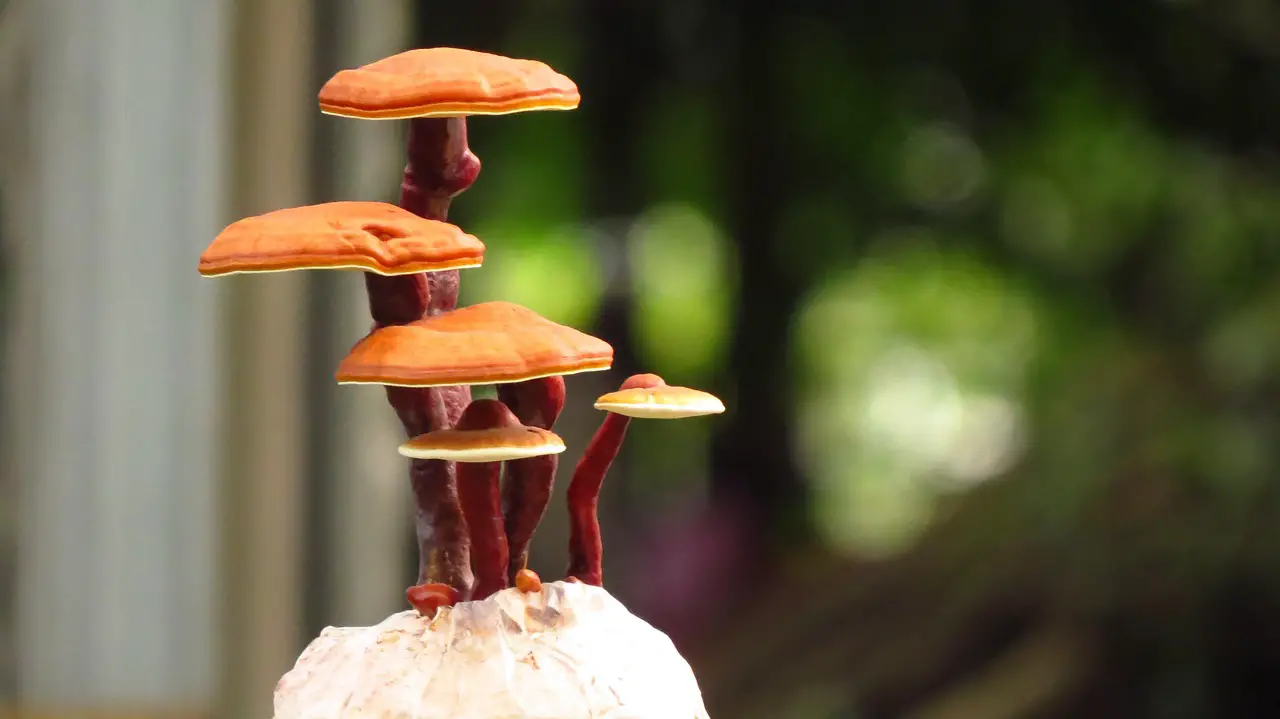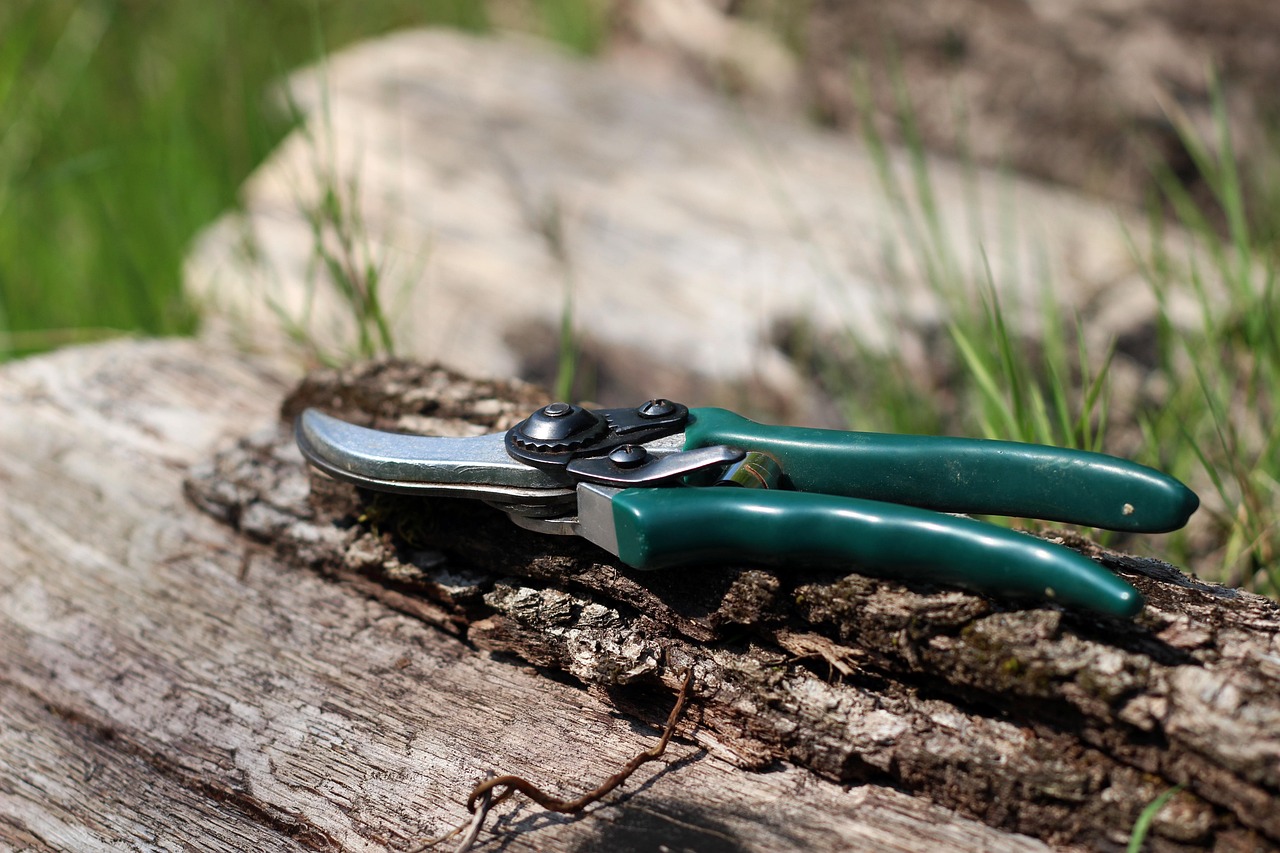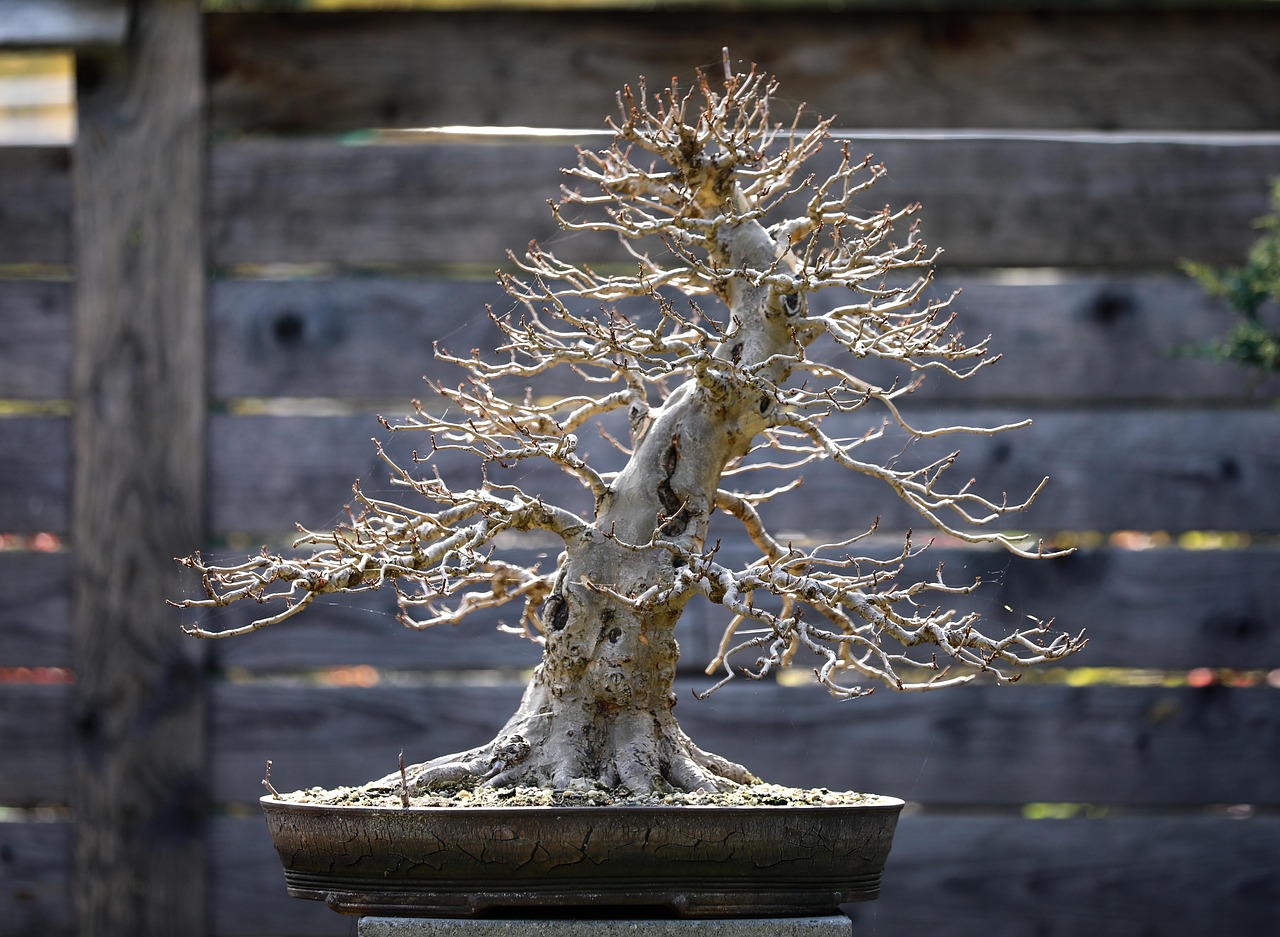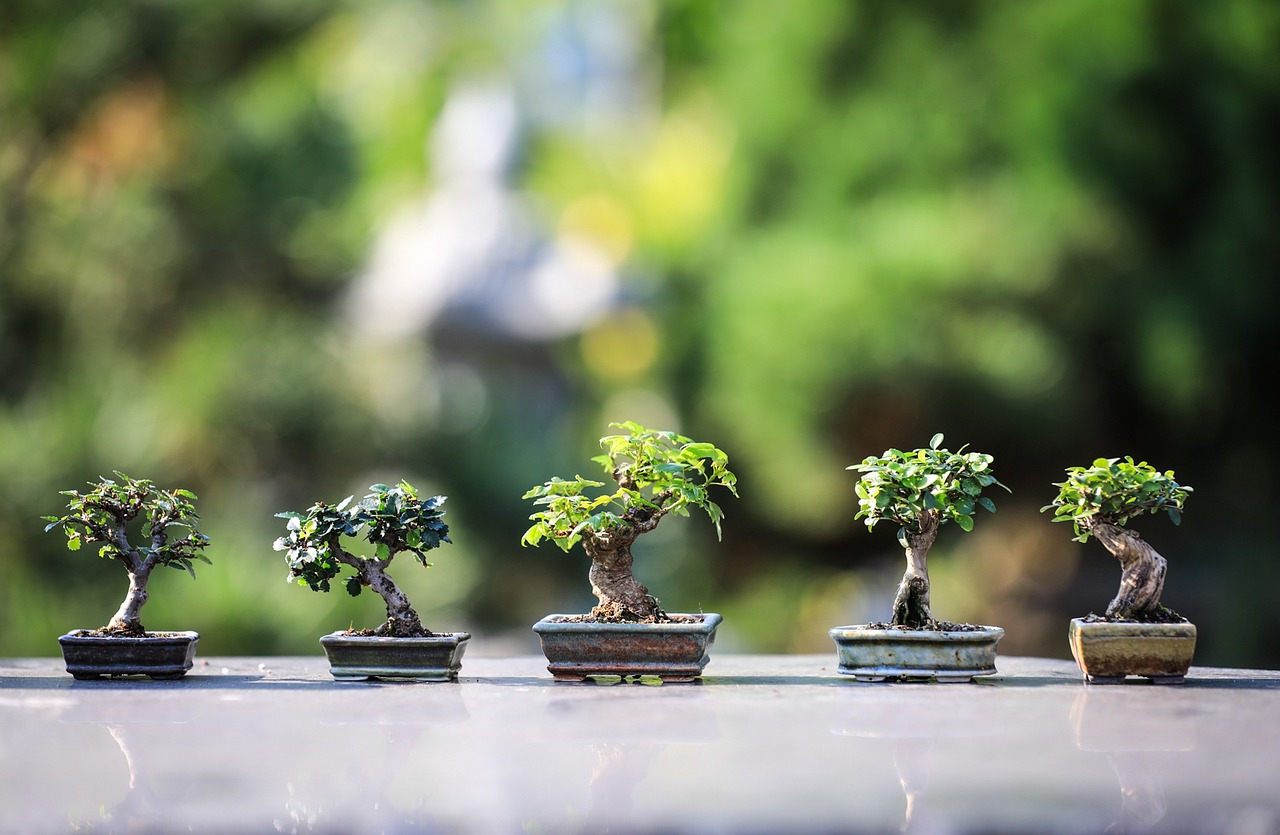Bonsai tree pruning is essential for creating stunning miniature designs. It involves careful trimming of branches and foliage to shape the tree, promote healthy growth, and maintain its size. Proper techniques can lead to beautiful, intricate forms that enhance the beauty of these living art pieces.
Understanding Bonsai and Its Art
Bonsai is a centuries-old practice that originated in China and was later refined in Japan. It involves cultivating small trees in containers, mimicking the shape and style of mature trees in nature. The word “bonsai” translates to “planted in a container,” reflecting the essence of this art form. Over time, bonsai has evolved into a unique blend of horticulture, aesthetics, and philosophy.

One of the key components of bonsai cultivation is pruning. This technique not only shapes the tree but also encourages new growth and maintains its health. Through careful pruning, enthusiasts can create stunning miniature designs that reflect their artistic vision and the natural world.
The Importance of Pruning
Pruning serves several vital purposes in bonsai cultivation:
- Shape and Style: Pruning helps achieve desired forms and styles, whether it be cascading, upright, or informal.
- Health: Removing dead or diseased branches prevents the spread of pathogens and promotes overall tree health.
- Growth Control: Regular pruning keeps the tree small and manageable while encouraging dense foliage.
- Light Penetration: Thinning the canopy allows light to reach all parts of the tree, supporting even growth.
These benefits highlight why mastering pruning techniques is crucial for any bonsai enthusiast. Understanding how to prune effectively can transform a simple plant into a breathtaking piece of art.

Types of Pruning Techniques
There are two primary types of pruning techniques used in bonsai: maintenance pruning and structural pruning. Both play a crucial role in shaping and maintaining your bonsai tree.
Maintenance Pruning
Maintenance pruning is performed regularly throughout the growing season. This technique focuses on maintaining the desired shape and promoting healthy growth. Key aspects include:
- Trimming New Growth: Cutting back new shoots encourages denser foliage and maintains size.
- Removing Weak Growth: Eliminating weak or excessive shoots helps direct energy to stronger branches.
- Shaping Foliage: Keeping the foliage balanced ensures a harmonious appearance.
Structural Pruning
Structural pruning is generally done less frequently but is essential for shaping the overall design of the tree. This technique involves more significant cuts to establish a tree’s framework. Important steps include:

- Selecting Main Branches: Choosing which branches will serve as the primary framework is vital for future growth.
- Cuts for Aesthetics: Making cuts at specific angles and locations enhances the visual appeal of the tree.
- Encouraging Movement: Pruning can create curves in branches, adding character to the design.
When to Prune Your Bonsai
The timing of pruning is crucial for encouraging healthy growth and achieving desired shapes. Generally, bonsai should be pruned during two main periods:
- Spring: As trees begin to grow actively, this is an ideal time for maintenance pruning. The energy from new growth supports recovery from cuts.
- Late Summer to Early Fall: A second round of maintenance pruning can be done here; however, structural pruning should be avoided during this period as trees prepare for dormancy.
By paying attention to seasonal changes and the specific needs of your bonsai species, you can optimize your pruning efforts for maximum impact.
Bonsai Pruning Tools
Having the right tools is essential for effective bonsai pruning. High-quality tools make precise cuts that promote healing and ensure clean lines in your design. Here are some fundamental tools every bonsai enthusiast should consider:

| Tool | Description |
|---|---|
| Bonsai Scissors | Designed for precise cutting of small branches and leaves. |
| Cutters | Heavy-duty tools for thicker branches that require more force to cut. |
| Wire Cutters | Used for cutting training wire without damaging branches. |
| Concave Cutters | Create a concave cut that heals quickly and minimizes scar tissue. |
Using these tools correctly can enhance the effectiveness of your pruning techniques, making the process smoother and more enjoyable.
The art of bonsai tree pruning requires patience, practice, and an understanding of plant biology. By learning these basics, enthusiasts can develop their skills and create stunning miniature designs that reflect their artistic vision.
Advanced Pruning Techniques
As bonsai enthusiasts progress in their journey, they may want to explore advanced pruning techniques. These methods require a deeper understanding of tree physiology and artistic vision. Mastering these techniques can lead to even more captivating miniature designs.
Pinching
Pinching is a technique used primarily on soft, new growth. It involves removing the tips of young shoots with your fingers rather than using scissors. This method encourages bushier growth and helps maintain the desired shape of the bonsai.
- Timing: Pinching should be done during the growing season when the tree is actively producing new shoots.
- Technique: Use your thumb and forefinger to grasp the tip of the shoot and gently pinch it off.
- Benefits: This method promotes lateral growth, resulting in a fuller canopy.
Crown Reduction
Crown reduction is an essential technique for keeping the overall height of the bonsai in check while maintaining its proportions. This method involves cutting back the top branches, allowing light to penetrate the inner foliage and promoting even growth.
- Select the Right Branches: Choose which branches to reduce, focusing on those that disrupt the tree’s overall shape.
- Make Clean Cuts: Use sharp scissors or cutters to make precise cuts at an angle to promote healing.
- Monitor Growth: After crown reduction, watch for new growth and adjust as necessary.
Seasonal Considerations for Pruning
Understanding seasonal changes is crucial for effective bonsai pruning. Different seasons provide varying opportunities and challenges for bonsai care.
Spring Pruning
Spring is an ideal time for maintenance pruning. As trees come out of dormancy, they enter a phase of vigorous growth. This is the best time to:
- Remove Deadwood: Cut off any dead or dying branches to promote tree health.
- Shape New Growth: Trim back new shoots to encourage a denser canopy.
- Inspect for Pests: Look for signs of pest infestations or diseases that may harm your bonsai.
Summer Pruning
During summer, growth can be rapid. While maintenance pruning can continue, it is crucial to avoid excessive cuts that might stress the tree. Summer pruning focuses on:
- Control Size: Trim back excess growth to maintain shape.
- Encourage Foliage Density: Keep pinching new growth to promote bushiness.
- Water Management: Ensure consistent watering as trees can dry out quickly in warm weather.
Fall Pruning
As trees prepare for dormancy, fall is a time for final adjustments. This period is about preparing the bonsai for winter and ensuring it remains healthy:
- Final Shaping: Make any last cuts to refine the shape before winter.
- Avoid Heavy Pruning: Refrain from significant cuts that could stress the tree as it prepares for dormancy.
- Fertilization: Provide nutrients to support health through the winter months.
Bonsai Species and Their Specific Pruning Needs
Different bonsai species have unique characteristics and requirements when it comes to pruning. Understanding these differences can enhance your ability to cultivate healthy and beautiful trees.
| Bonsai Species | Pruning Characteristics |
|---|---|
| Pine | Pines require careful needle plucking and branch shortening to maintain shape and health. |
| Maple | Maples benefit from structural pruning in late winter or early spring for optimal growth. |
| Ficus | This species responds well to frequent maintenance pruning, encouraging dense foliage. |
| Cypress | Cypress trees benefit from selective pruning to maintain their natural form while controlling size. |
By recognizing these species-specific needs, bonsai artists can tailor their pruning approaches, leading to healthier trees and more aesthetically pleasing designs.
The Role of Wiring in Bonsai Shaping
Wiring complements pruning by allowing for additional shaping options. This technique involves wrapping wire around branches to bend and reposition them as desired. Understanding how to wire effectively can significantly enhance your bonsai’s design.
- Selecting Wire: Use aluminum or copper wire, which is malleable and strong enough to hold branches in place.
- Wiring Technique: Wrap the wire at a 45-degree angle around the branch, leaving enough space between coils to allow for growth.
- Caution: Monitor wired branches regularly to avoid damage as they grow. Remove wiring when necessary to prevent scarring.
This combination of pruning and wiring creates intricate designs and allows bonsai artists to express their creativity while ensuring the health of their trees.
Common Mistakes in Bonsai Pruning
While pruning is essential for maintaining the health and aesthetics of bonsai trees, many beginners make common mistakes that can hinder their progress. Recognizing these pitfalls can help enthusiasts refine their techniques and ensure their trees thrive.
Over-Pruning
One of the most frequent mistakes is over-pruning. This occurs when too much foliage or too many branches are removed at once. The consequences can be detrimental:
- Stress on the Tree: Removing too much foliage can shock the tree, leading to stunted growth or even death.
- Loss of Energy: Foliage is essential for photosynthesis. Over-pruning reduces the tree’s ability to produce energy.
- Unnatural Appearance: Excessive cuts can create an unnatural look that detracts from the bonsai’s beauty.
Ignoring Tree Health
Another significant mistake is neglecting the overall health of the tree. Before pruning, it’s crucial to assess the condition of the bonsai. Key considerations include:
- Pest and Disease Inspection: Always check for signs of pests or diseases before making cuts.
- Soil Quality: Healthy soil supports root health, which is vital for recovery after pruning.
- Watering Needs: Ensure appropriate watering before and after pruning to minimize stress.
Post-Pruning Care
After completing pruning, taking care of your bonsai is essential to support its recovery and promote healthy growth. Proper post-pruning care includes several important steps:
Watering
After pruning, the tree may require special attention to its watering needs. Here are some guidelines:
- Check Soil Moisture: Ensure the soil remains adequately moist but not waterlogged.
- Avoid Overwatering: Too much water can lead to root rot, especially after significant pruning.
- Monitor Regularly: Keep an eye on the tree for signs of dehydration or over-saturation.
Fertilization
Providing nutrients after pruning helps the bonsai recover and grow vigorously. Consider these tips:
- Use Balanced Fertilizers: Apply a balanced fertilizer that supports both root and foliage growth.
- Avoid Immediate Fertilization: Wait a few weeks after pruning before fertilizing to allow the tree to stabilize.
- Follow Recommended Schedules: Stick to a fertilization schedule that matches your specific bonsai species.
Bonsai Pruning Styles and Aesthetic Considerations
The aesthetic aspect of bonsai is vital, as it defines the overall look and feel of the design. Understanding different styles and principles of aesthetics can enhance your bonsai artistry.
Bonsai Styles
Several traditional bonsai styles influence how you approach pruning. Familiarity with these styles can guide your shaping efforts:
- Formal Upright (Chokkan): Characterized by a straight trunk with branches that taper towards the top.
- Informal Upright (Moyogi): Features a trunk that curves naturally, creating a more relaxed appearance.
- Cascading (Kengai): Involves branches that extend downward, resembling trees growing on cliffs.
- Broom Style (Hokidachi): Showcases a dense canopy with branches radiating from a single point.
Aesthetic Principles
Bonsai design is also influenced by various aesthetic principles that enhance visual appeal. Key principles include:
- Simplicity: A clean and uncluttered design often creates a more striking impact.
- Balance: A well-balanced bonsai appears stable and visually pleasing, with branches evenly distributed.
- Proportion: Ensuring that the size of leaves and branches corresponds to the overall size of the tree enhances harmony.
- Negative Space: Incorporating empty spaces around the tree allows viewers to appreciate its form better.
Bonsai Community and Resources
Joining a community or accessing resources can significantly enhance your bonsai journey. Networking with other enthusiasts provides valuable insights and support. Here are some resources to consider:
Bonsai Clubs and Societies
Many regions have local bonsai clubs or societies where enthusiasts gather to share knowledge and experiences. Benefits of joining include:
- Workshops: Participate in hands-on workshops with experienced bonsai practitioners.
- Networking Opportunities: Meet fellow enthusiasts who can offer advice and support.
- Exhibitions: Attend exhibitions to gain inspiration from high-quality bonsai displays.
Online Forums and Resources
The internet offers a wealth of information on bonsai techniques, care, and design. Consider these online resources:
- YouTube Channels: Follow bonsai experts who provide instructional videos on various techniques.
- Bonsai Blogs: Read articles written by seasoned bonsai artists sharing their tips and experiences.
- Socia Media Groups: Join Facebook groups or forums dedicated to bonsai discussions for additional support.
Engaging with these communities can deepen your understanding of bonsai and inspire your artistic growth.
Special Considerations for Specific Bonsai Species
Understanding the unique needs of different bonsai species is essential for successful pruning and overall care. Each species has its characteristics that influence how and when you should prune. Here are some popular bonsai species along with specific considerations:
Juniper
Junipers are popular choices for bonsai due to their hardiness and beautiful foliage. When pruning junipers:
- Prune in Late Spring: This timing allows for healthy growth and recovery.
- Focus on New Growth: Trim back new shoots to maintain shape and encourage bushiness.
- Avoid Heavy Cuts: Make light cuts to avoid stressing the tree.
Azalea
Azaleas are known for their vibrant blooms. Special care should be taken when pruning:
- Prune After Flowering: This helps maintain the health of the plant while encouraging new blooms.
- Thin Out Weak Growth: Remove any weak or crowded branches to improve airflow and health.
- Monitor for Pests: Azaleas can attract pests, so regular inspections are necessary.
Maple
Maples are prized for their beautiful foliage and graceful forms. Pruning considerations include:
- Winter or Early Spring Pruning: This timing is best for structural changes before new growth begins.
- Avoid Heavy Cuts: Maples can bleed sap, so make cuts carefully and only as necessary.
- Encourage Dense Foliage: Regular maintenance pruning helps achieve a full, lush appearance.
Integrating Creativity into Bonsai Design
Bonsai is not just a horticultural practice; it is also an art form. Integrating creativity into your bonsai designs can elevate your trees from mere plants to stunning pieces of art. Here are some ways to foster creativity in your bonsai journey:
Experiment with Styles
Don’t hesitate to explore various bonsai styles and techniques. Experimenting can lead to unique designs that reflect your personal aesthetic. Consider:
- Combining Styles: Blend elements from different styles to create something entirely new.
- Incorporating Natural Elements: Use rocks, moss, and other natural materials to enhance the overall composition.
- Dynamic Shapes: Aim for movement in your designs by utilizing curves and angles in branch placement.
Embrace Seasonal Changes
The changing seasons can inspire new design concepts. Take advantage of seasonal variations in color and foliage. For instance:
- Spring Blooms: Highlight the vibrant flowers of your azaleas or cherries during springtime.
- Autumn Colors: Emphasize the rich hues of maple leaves in fall by positioning them where they catch light.
- Winter Structures: In winter, showcase the bare branches of deciduous trees to highlight their unique shapes.
Caring for Your Bonsai Beyond Pruning
While pruning is a critical aspect of bonsai care, it is essential to remember that bonsai requires holistic care for optimal health. Here are additional care aspects to consider:
Repotting
Regular repotting is crucial for maintaining healthy root systems. Here’s what to keep in mind:
- Frequency: Most bonsai should be repotted every 1-3 years, depending on growth rates.
- Timing: Early spring is usually the best time to repot before active growth begins.
- Pest Inspection: Check roots for pests or diseases during repotting and treat accordingly.
Pest and Disease Management
Pests and diseases can be detrimental to bonsai health. Regular monitoring is vital:
- Identify Common Pests: Look for aphids, spider mites, and scale insects that commonly affect bonsai.
- Treatment Options: Use organic pesticides or insecticidal soaps to manage infestations when necessary.
- Disease Prevention: Maintain good airflow around the tree and avoid overwatering to prevent fungal diseases.
Final Thoughts
Bonsai tree pruning is a rewarding practice that combines horticulture with artistic expression. As you engage with this ancient art form, remember that patience and practice are key. Each tree has its own story, and through careful pruning and care, you can help tell that story beautifully.
The journey of bonsai cultivation is one of continuous learning. Embrace the process, connect with fellow enthusiasts, and allow your creativity to flourish. Whether you are just starting or deepening your existing knowledge, the world of bonsai offers endless opportunities for exploration and artistic growth. By mastering pruning techniques, understanding seasonal needs, and integrating creativity into your designs, you can create stunning miniature landscapes that bring joy and inspiration for years to come.
Your bonsai journey is uniquely yours, filled with challenges and triumphs that shape both your skillset and your appreciation for nature. Keep learning, keep growing, and enjoy every moment spent nurturing these living works of art.
